
langgraphjs
Framework to build resilient language agents as graphs.
Stars: 2103
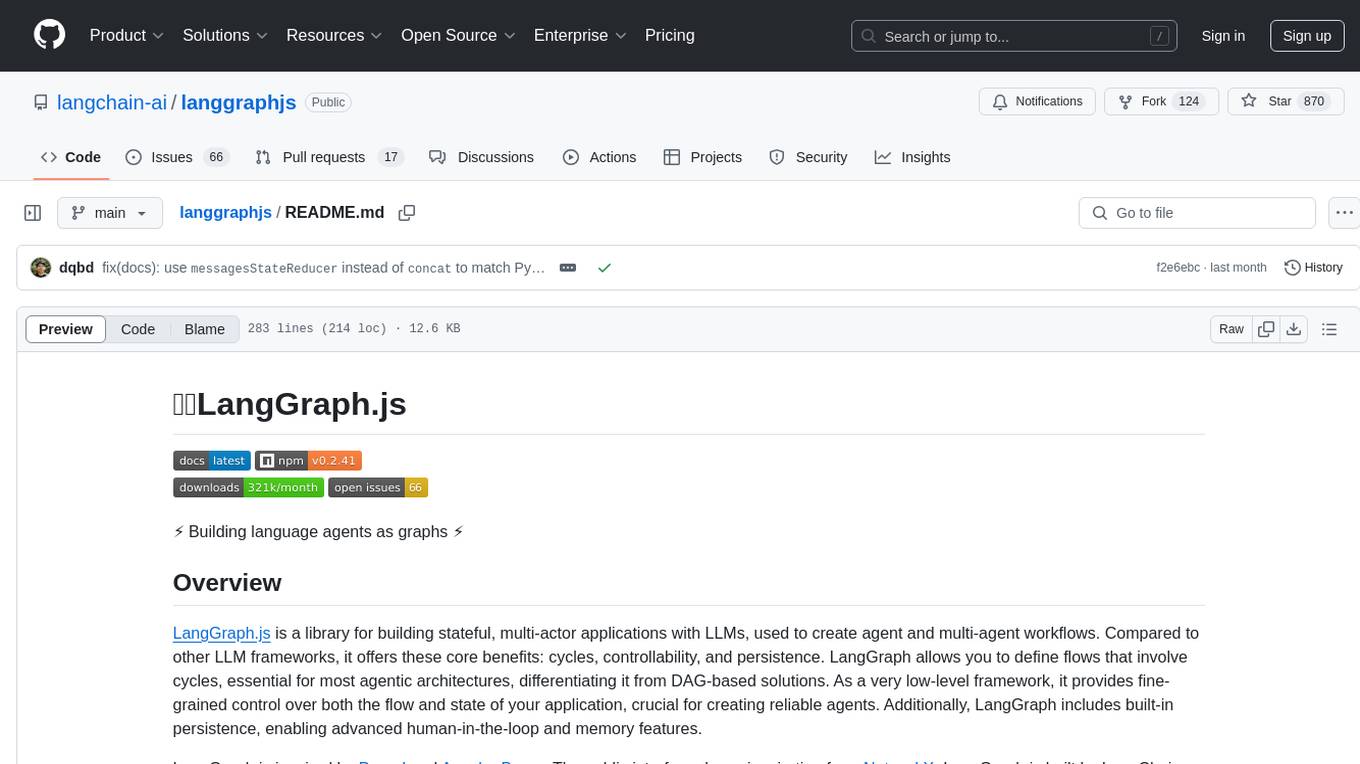
LangGraph.js is a library for building stateful, multi-actor applications with LLMs, offering benefits such as cycles, controllability, and persistence. It allows defining flows involving cycles, providing fine-grained control over application flow and state. Inspired by Pregel and Apache Beam, it includes features like loops, persistence, human-in-the-loop workflows, and streaming support. LangGraph integrates seamlessly with LangChain.js and LangSmith but can be used independently.
README:
[!NOTE] Looking for the Python version? See the Python repo and the Python docs.
LangGraph — used by Replit, Uber, LinkedIn, GitLab and more — is a low-level orchestration framework for building controllable agents. While langchain provides integrations and composable components to streamline LLM application development, the LangGraph library enables agent orchestration — offering customizable architectures, long-term memory, and human-in-the-loop to reliably handle complex tasks.
npm install @langchain/langgraph @langchain/coreTo learn more about how to use LangGraph, check out the docs. We show a simple example below of how to create a ReAct agent.
// npm install @langchain-anthropic
import { createReactAgent } from "@langchain/langgraph/prebuilt";
import { ChatAnthropic } from "@langchain/anthropic";
import { tool } from "@langchain/core/tools";
import { z } from "zod";
const search = tool(
async ({ query }) => {
if (
query.toLowerCase().includes("sf") ||
query.toLowerCase().includes("san francisco")
) {
return "It's 60 degrees and foggy.";
}
return "It's 90 degrees and sunny.";
},
{
name: "search",
description: "Call to surf the web.",
schema: z.object({
query: z.string().describe("The query to use in your search."),
}),
}
);
const model = new ChatAnthropic({
model: "claude-3-7-sonnet-latest",
});
const agent = createReactAgent({
llm: model,
tools: [search],
});
const result = await agent.invoke({
messages: [
{
role: "user",
content: "what is the weather in sf",
},
],
});Get started quickly by building a full-stack LangGraph application using the create-agent-chat-app CLI:
npx create-agent-chat-app@latestThe CLI sets up a chat interface and helps you configure your application, including:
- 🧠 Choice of 4 prebuilt agents (ReAct, Memory, Research, Retrieval)
- 🌐 Frontend framework (Next.js or Vite)
- 📦 Package manager (
npm,yarn, orpnpm)
LangGraph is built for developers who want to build powerful, adaptable AI agents. Developers choose LangGraph for:
- Reliability and controllability. Steer agent actions with moderation checks and human-in-the-loop approvals. LangGraph persists context for long-running workflows, keeping your agents on course.
- Low-level and extensible. Build custom agents with fully descriptive, low-level primitives – free from rigid abstractions that limit customization. Design scalable multi-agent systems, with each agent serving a specific role tailored to your use case.
- First-class streaming support. With token-by-token streaming and streaming of intermediate steps, LangGraph gives users clear visibility into agent reasoning and actions as they unfold in real time.
LangGraph is trusted in production and powering agents for companies like:
- Klarna: Customer support bot for 85 million active users
- Elastic: Security AI assistant for threat detection
- Uber: Automated unit test generation
- Replit: Code generation
- And many more (see list here)
While LangGraph can be used standalone, it also integrates seamlessly with any LangChain product, giving developers a full suite of tools for building agents. To improve your LLM application development, pair LangGraph with:
- LangSmith — Helpful for agent evals and observability. Debug poor-performing LLM app runs, evaluate agent trajectories, gain visibility in production, and improve performance over time.
- LangGraph Platform — Deploy and scale agents effortlessly with a purpose-built deployment platform for long running, stateful workflows. Discover, reuse, configure, and share agents across teams — and iterate quickly with visual prototyping in LangGraph Studio.
While LangGraph is our open-source agent orchestration framework, enterprises that need scalable agent deployment can benefit from LangGraph Platform.
LangGraph Platform can help engineering teams:
- Accelerate agent development: Quickly create agent UXs with configurable templates and LangGraph Studio for visualizing and debugging agent interactions.
- Deploy seamlessly: We handle the complexity of deploying your agent. LangGraph Platform includes robust APIs for memory, threads, and cron jobs plus auto-scaling task queues & servers.
- Centralize agent management & reusability: Discover, reuse, and manage agents across the organization. Business users can also modify agents without coding.
- LangChain Forum: Connect with the community and share all of your technical questions, ideas, and feedback.
- LangChain Academy: Learn the basics of LangGraph in our free, structured course.
- Tutorials: Simple walkthroughs with guided examples on getting started with LangGraph.
- Templates: Pre-built reference apps for common agentic workflows (e.g. ReAct agent, memory, retrieval etc.) that can be cloned and adapted.
- How-to Guides: Quick, actionable code snippets for topics such as streaming, adding memory & persistence, and design patterns (e.g. branching, subgraphs, etc.).
- API Reference: Detailed reference on core classes, methods, how to use the graph and checkpointing APIs, and higher-level prebuilt components.
- Built with LangGraph: Hear how industry leaders use LangGraph to ship powerful, production-ready AI applications.
LangGraph is inspired by Pregel and Apache Beam. The public interface draws inspiration from NetworkX. LangGraph is built by LangChain Inc, the creators of LangChain, but can be used without LangChain.
For Tasks:
Click tags to check more tools for each tasksFor Jobs:
Alternative AI tools for langgraphjs
Similar Open Source Tools

langgraphjs
LangGraph.js is a library for building stateful, multi-actor applications with LLMs, offering benefits such as cycles, controllability, and persistence. It allows defining flows involving cycles, providing fine-grained control over application flow and state. Inspired by Pregel and Apache Beam, it includes features like loops, persistence, human-in-the-loop workflows, and streaming support. LangGraph integrates seamlessly with LangChain.js and LangSmith but can be used independently.
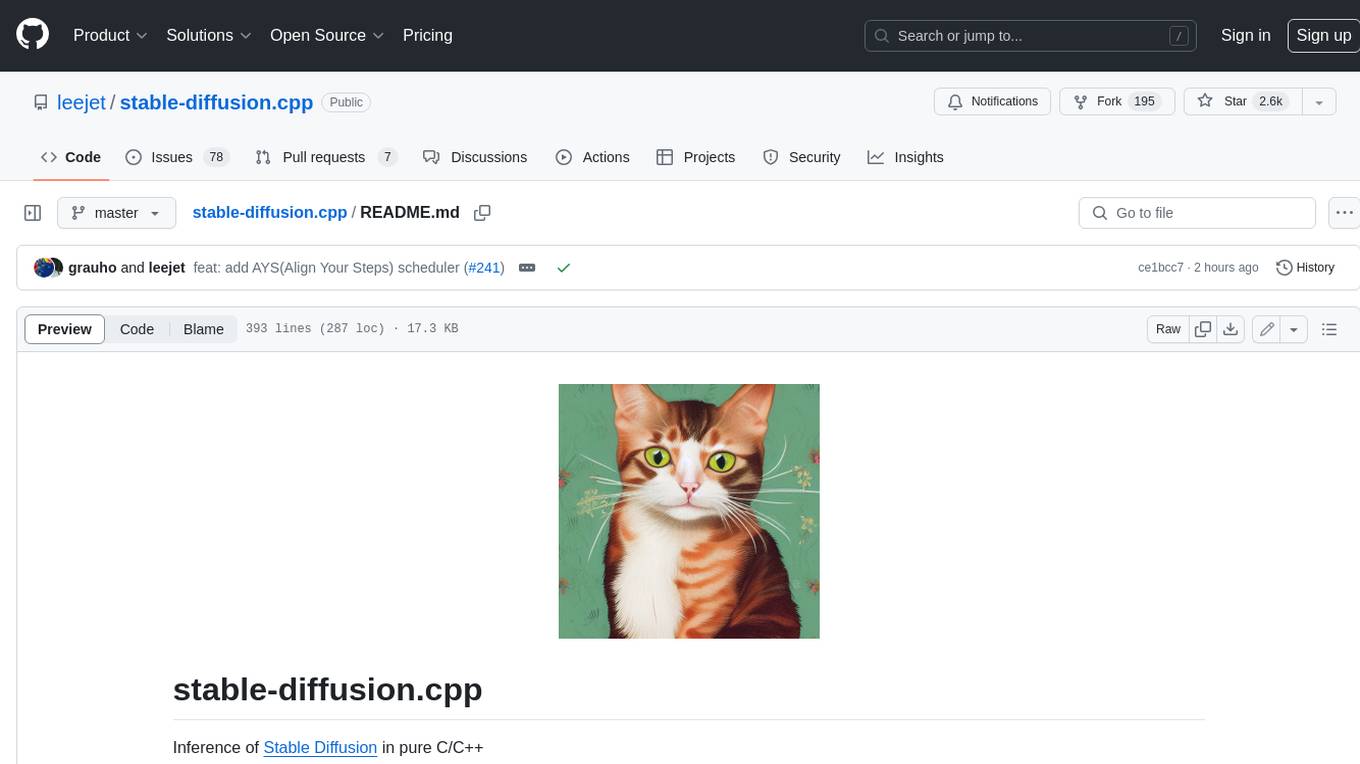
stable-diffusion.cpp
The stable-diffusion.cpp repository provides an implementation for inferring stable diffusion in pure C/C++. It offers features such as support for different versions of stable diffusion, lightweight and dependency-free implementation, various quantization support, memory-efficient CPU inference, GPU acceleration, and more. Users can download the built executable program or build it manually. The repository also includes instructions for downloading weights, building from scratch, using different acceleration methods, running the tool, converting weights, and utilizing various features like Flash Attention, ESRGAN upscaling, PhotoMaker support, and more. Additionally, it mentions future TODOs and provides information on memory requirements, bindings, UIs, contributors, and references.
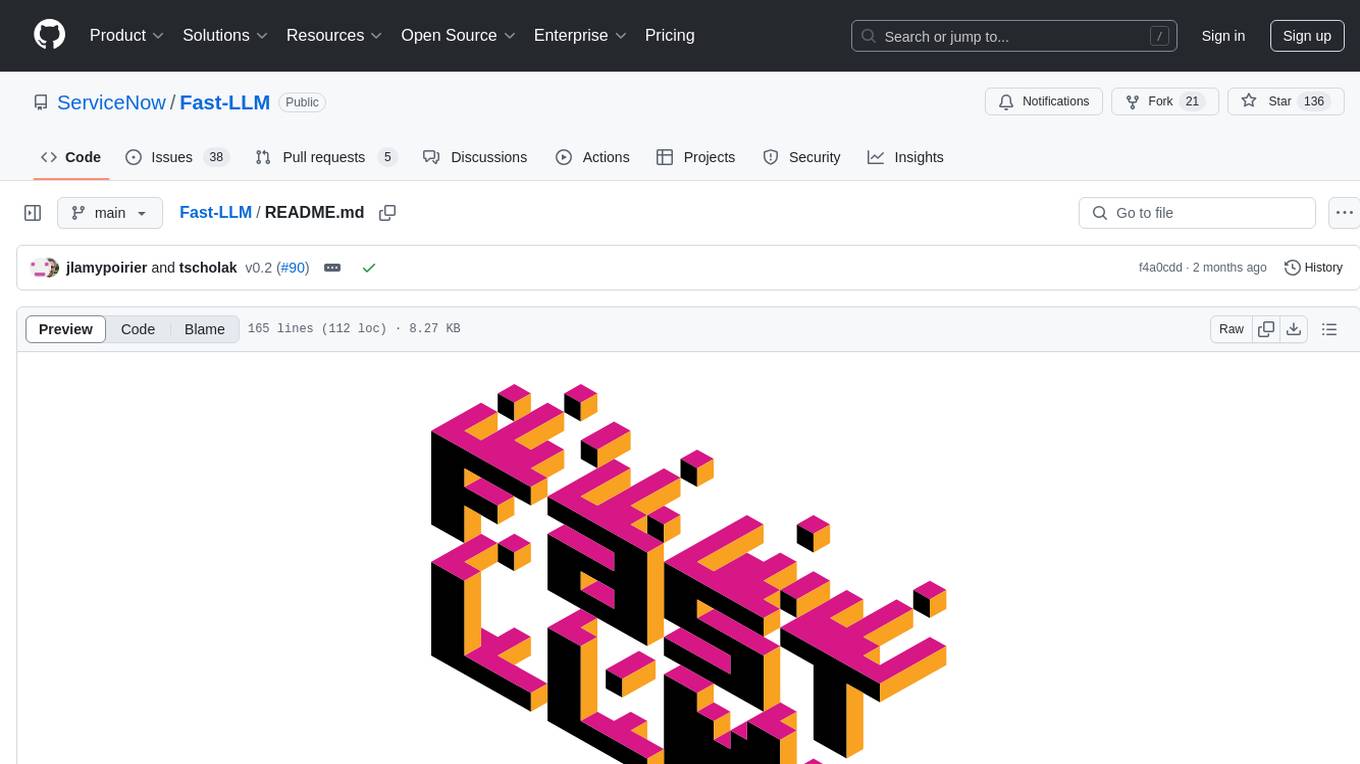
Fast-LLM
Fast-LLM is an open-source library designed for training large language models with exceptional speed, scalability, and flexibility. Built on PyTorch and Triton, it offers optimized kernel efficiency, reduced overheads, and memory usage, making it suitable for training models of all sizes. The library supports distributed training across multiple GPUs and nodes, offers flexibility in model architectures, and is easy to use with pre-built Docker images and simple configuration. Fast-LLM is licensed under Apache 2.0, developed transparently on GitHub, and encourages contributions and collaboration from the community.
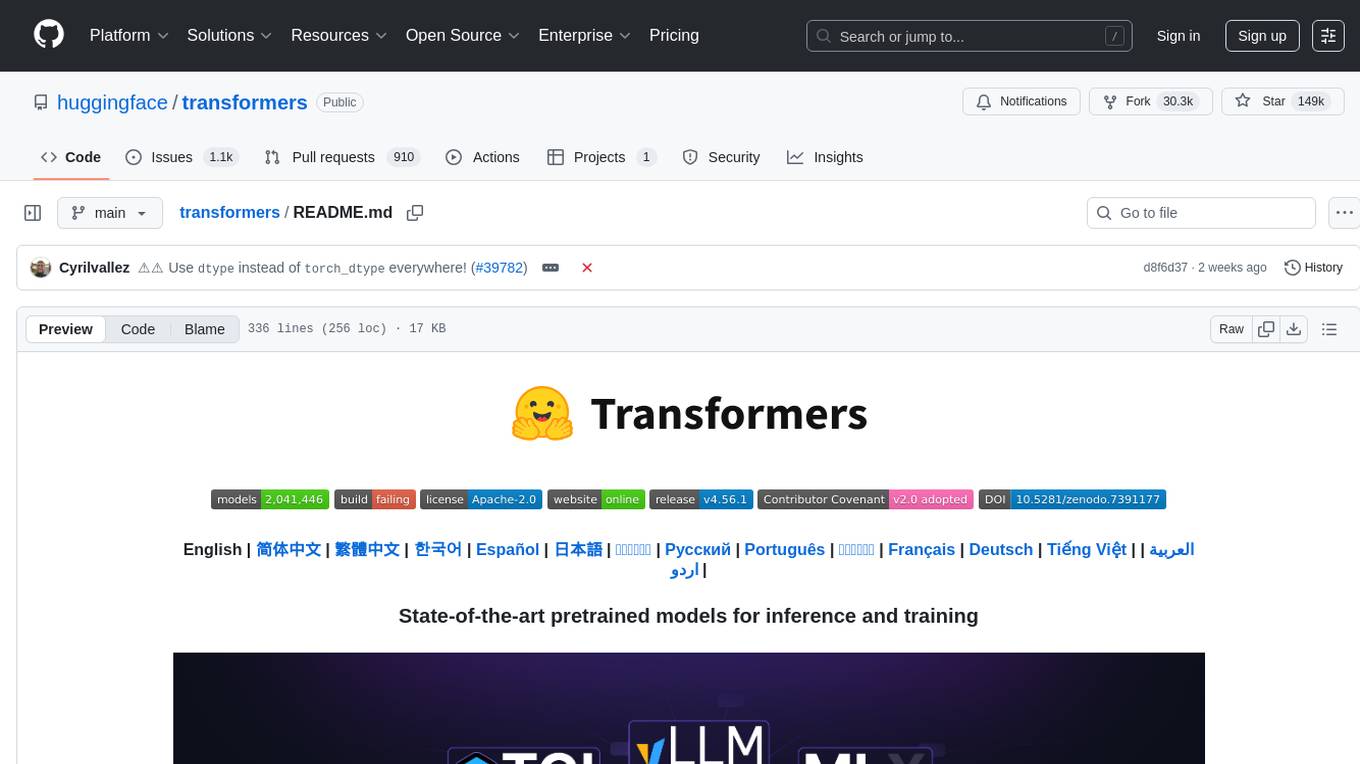
transformers
Transformers is a state-of-the-art pretrained models library that acts as the model-definition framework for machine learning models in text, computer vision, audio, video, and multimodal tasks. It centralizes model definition for compatibility across various training frameworks, inference engines, and modeling libraries. The library simplifies the usage of new models by providing simple, customizable, and efficient model definitions. With over 1M+ Transformers model checkpoints available, users can easily find and utilize models for their tasks.
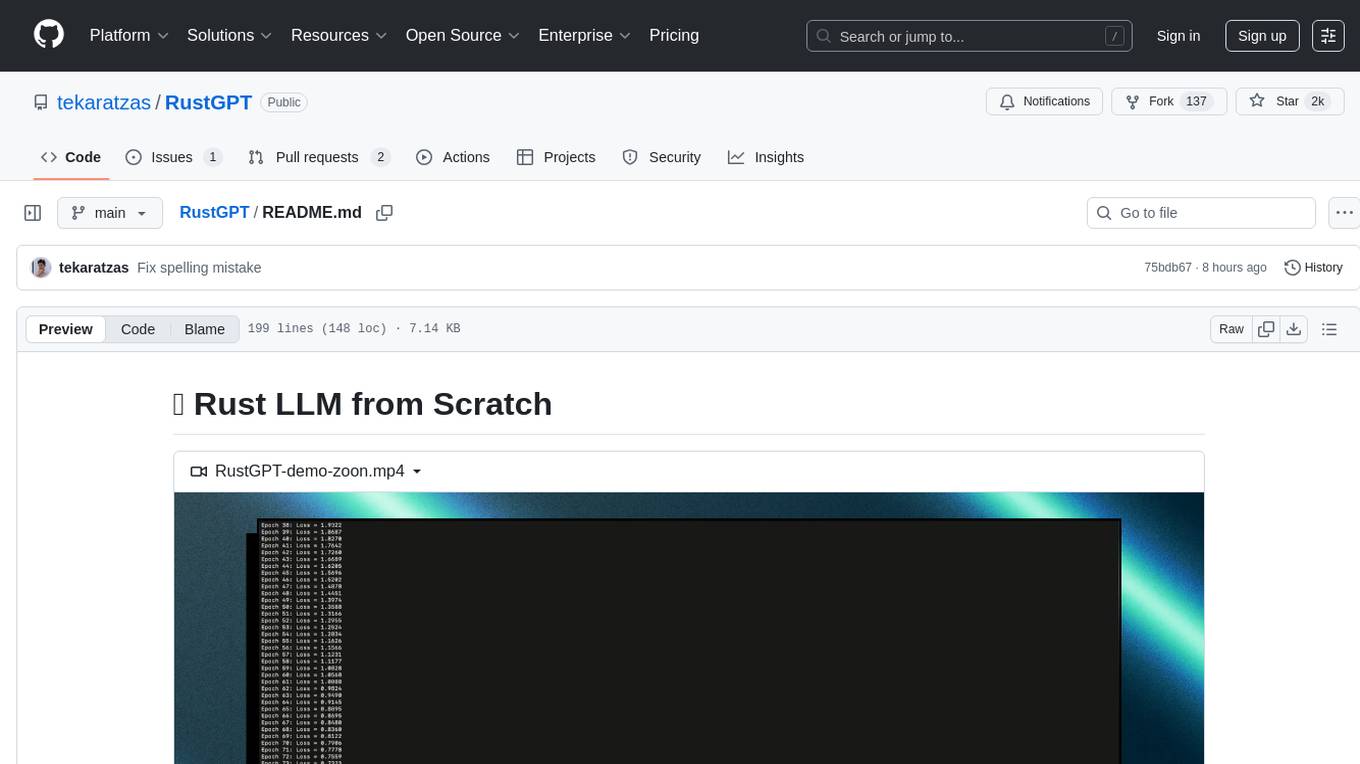
RustGPT
A complete Large Language Model implementation in pure Rust with no external ML frameworks. Demonstrates building a transformer-based language model from scratch, including pre-training, instruction tuning, interactive chat mode, full backpropagation, and modular architecture. Model learns basic world knowledge and conversational patterns. Features custom tokenization, greedy decoding, gradient clipping, modular layer system, and comprehensive test coverage. Ideal for understanding modern LLMs and key ML concepts. Dependencies include ndarray for matrix operations and rand for random number generation. Contributions welcome for model persistence, performance optimizations, better sampling, evaluation metrics, advanced architectures, training improvements, data handling, and model analysis. Follows standard Rust conventions and encourages contributions at beginner, intermediate, and advanced levels.
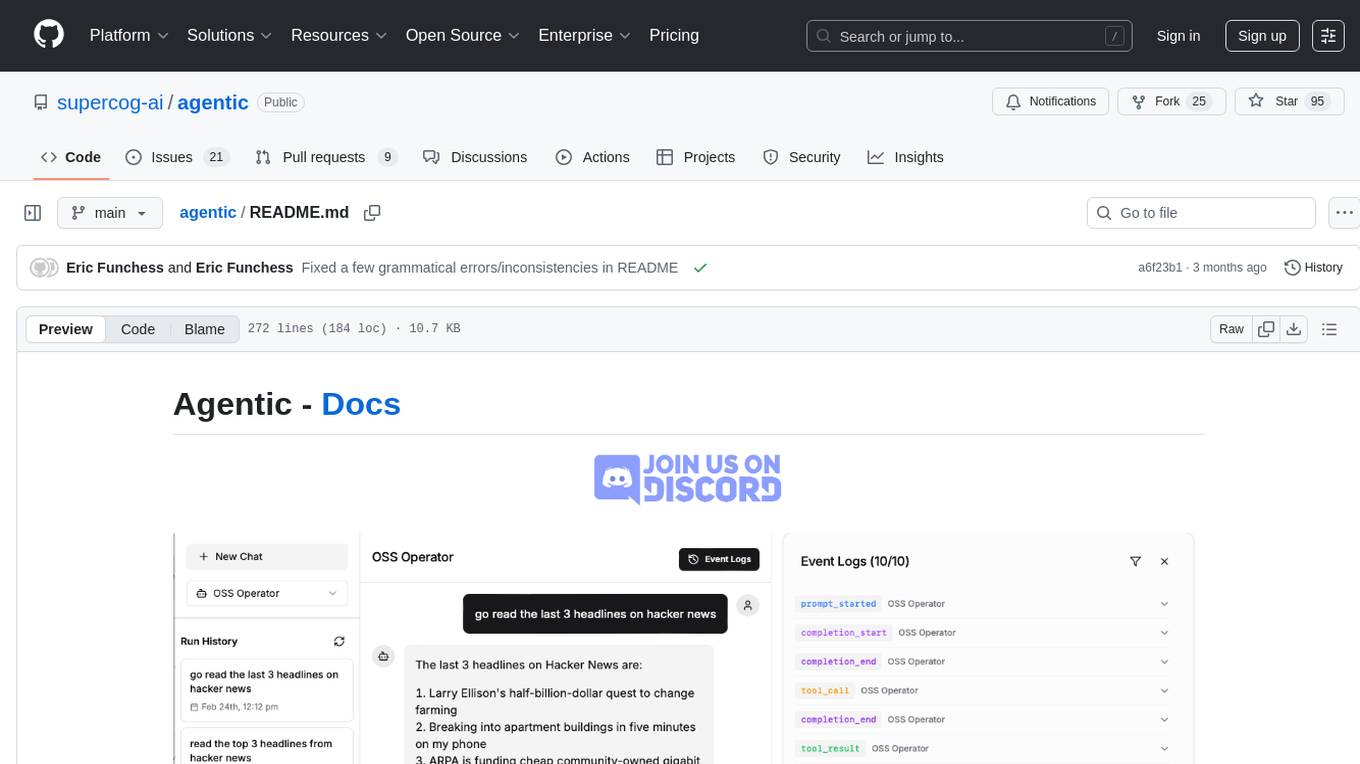
agentic
Agentic is a lightweight and flexible Python library for building multi-agent systems. It provides a simple and intuitive API for creating and managing agents, defining their behaviors, and simulating interactions in a multi-agent environment. With Agentic, users can easily design and implement complex agent-based models to study emergent behaviors, social dynamics, and decentralized decision-making processes. The library supports various agent architectures, communication protocols, and simulation scenarios, making it suitable for a wide range of research and educational applications in the fields of artificial intelligence, machine learning, social sciences, and robotics.
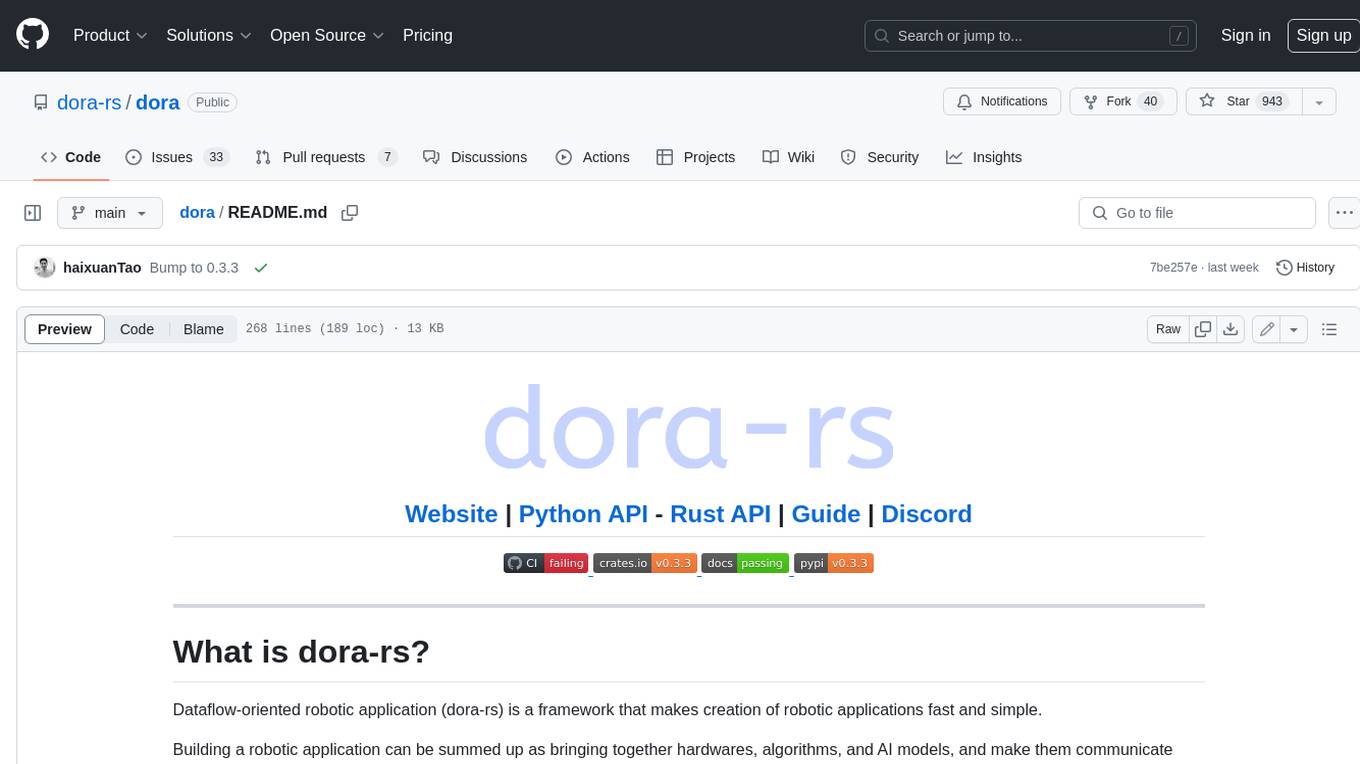
dora
Dataflow-oriented robotic application (dora-rs) is a framework that makes creation of robotic applications fast and simple. Building a robotic application can be summed up as bringing together hardwares, algorithms, and AI models, and make them communicate with each others. At dora-rs, we try to: make integration of hardware and software easy by supporting Python, C, C++, and also ROS2. make communication low latency by using zero-copy Arrow messages. dora-rs is still experimental and you might experience bugs, but we're working very hard to make it stable as possible.
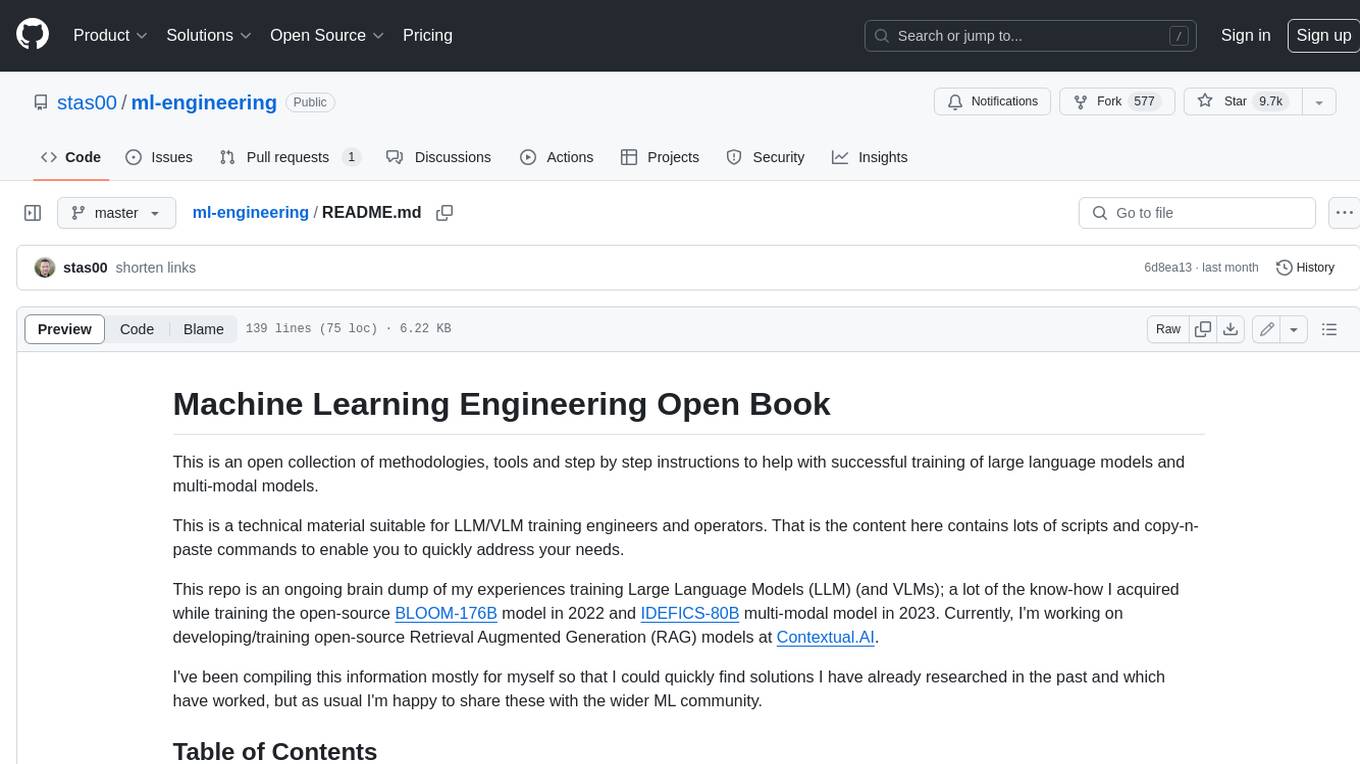
ml-engineering
This repository provides a comprehensive collection of methodologies, tools, and step-by-step instructions for successful training of large language models (LLMs) and multi-modal models. It is a technical resource suitable for LLM/VLM training engineers and operators, containing numerous scripts and copy-n-paste commands to facilitate quick problem-solving. The repository is an ongoing compilation of the author's experiences training BLOOM-176B and IDEFICS-80B models, and currently focuses on the development and training of Retrieval Augmented Generation (RAG) models at Contextual.AI. The content is organized into six parts: Insights, Hardware, Orchestration, Training, Development, and Miscellaneous. It includes key comparison tables for high-end accelerators and networks, as well as shortcuts to frequently needed tools and guides. The repository is open to contributions and discussions, and is licensed under Attribution-ShareAlike 4.0 International.
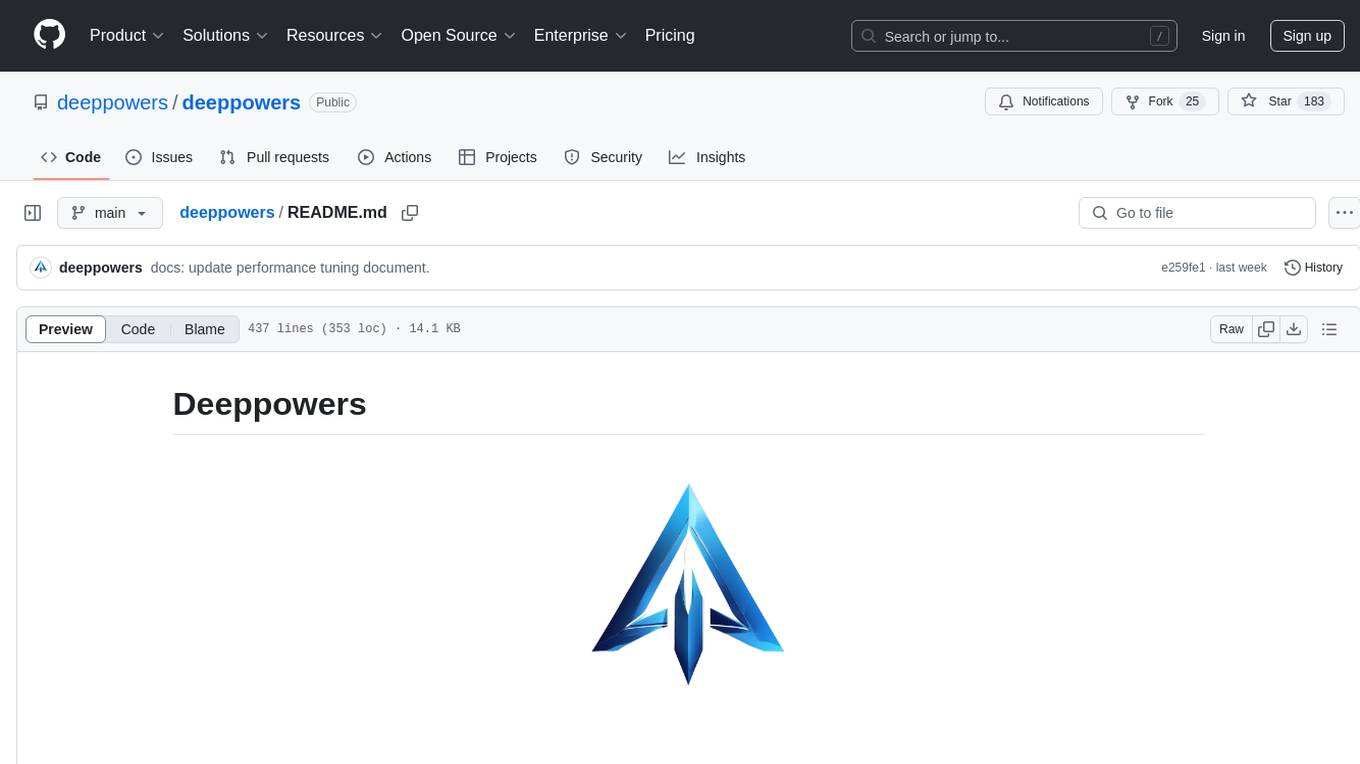
deeppowers
Deeppowers is a powerful Python library for deep learning applications. It provides a wide range of tools and utilities to simplify the process of building and training deep neural networks. With Deeppowers, users can easily create complex neural network architectures, perform efficient training and optimization, and deploy models for various tasks. The library is designed to be user-friendly and flexible, making it suitable for both beginners and experienced deep learning practitioners.
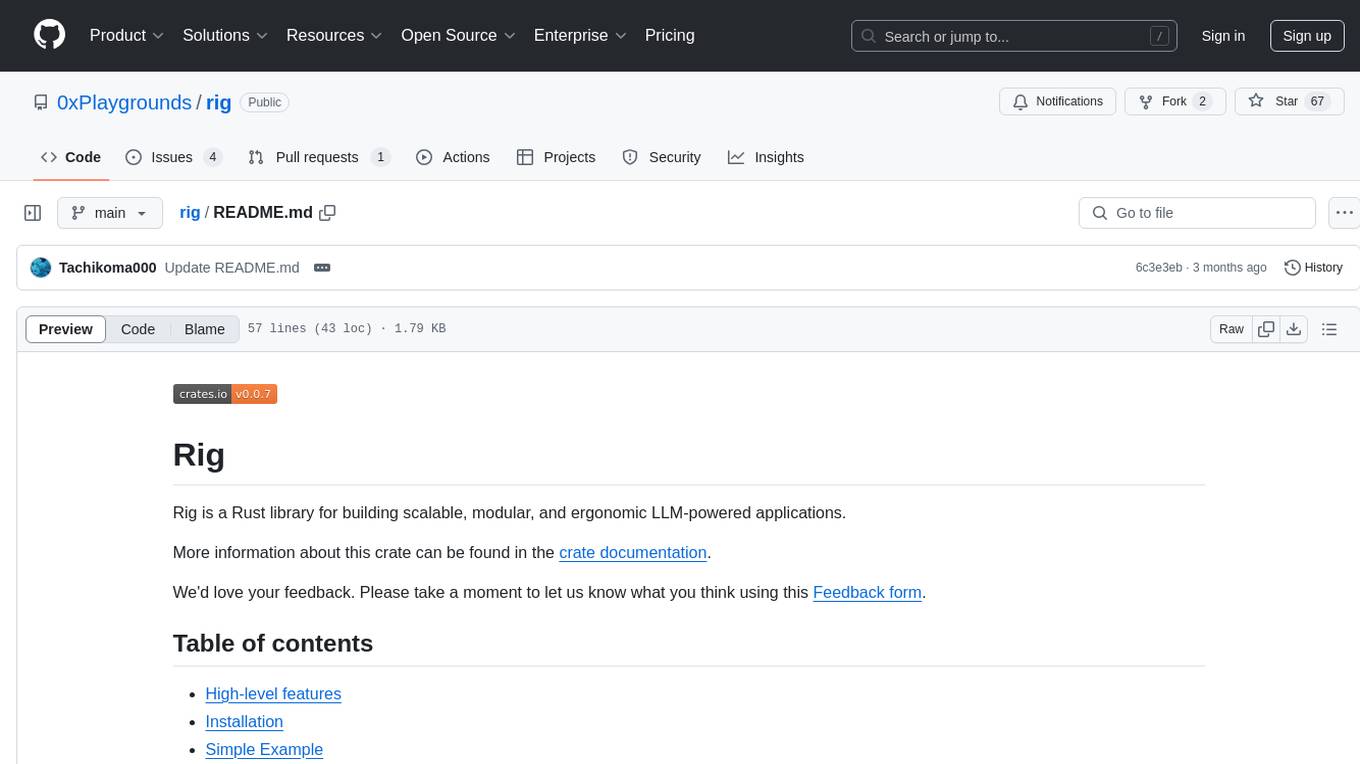
rig
Rig is a Rust library designed for building scalable, modular, and user-friendly applications powered by large language models (LLMs). It provides full support for LLM completion and embedding workflows, offers simple yet powerful abstractions for LLM providers like OpenAI and Cohere, as well as vector stores such as MongoDB and in-memory storage. With Rig, users can easily integrate LLMs into their applications with minimal boilerplate code.
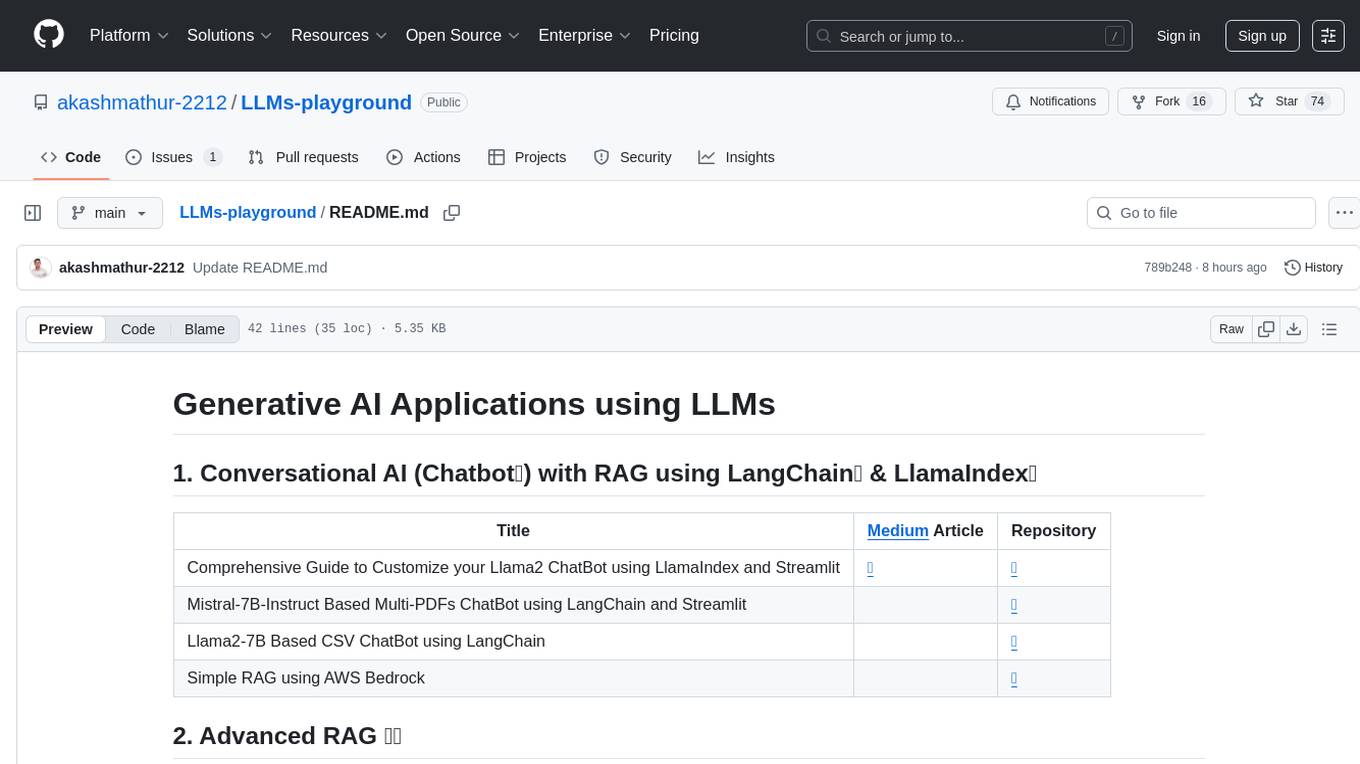
LLMs-playground
LLMs-playground is a repository containing code examples and tutorials for learning and experimenting with Large Language Models (LLMs). It provides a hands-on approach to understanding how LLMs work and how to fine-tune them for specific tasks. The repository covers various LLM architectures, pre-training techniques, and fine-tuning strategies, making it a valuable resource for researchers, students, and practitioners interested in natural language processing and machine learning. By exploring the code and following the tutorials, users can gain practical insights into working with LLMs and apply their knowledge to real-world projects.
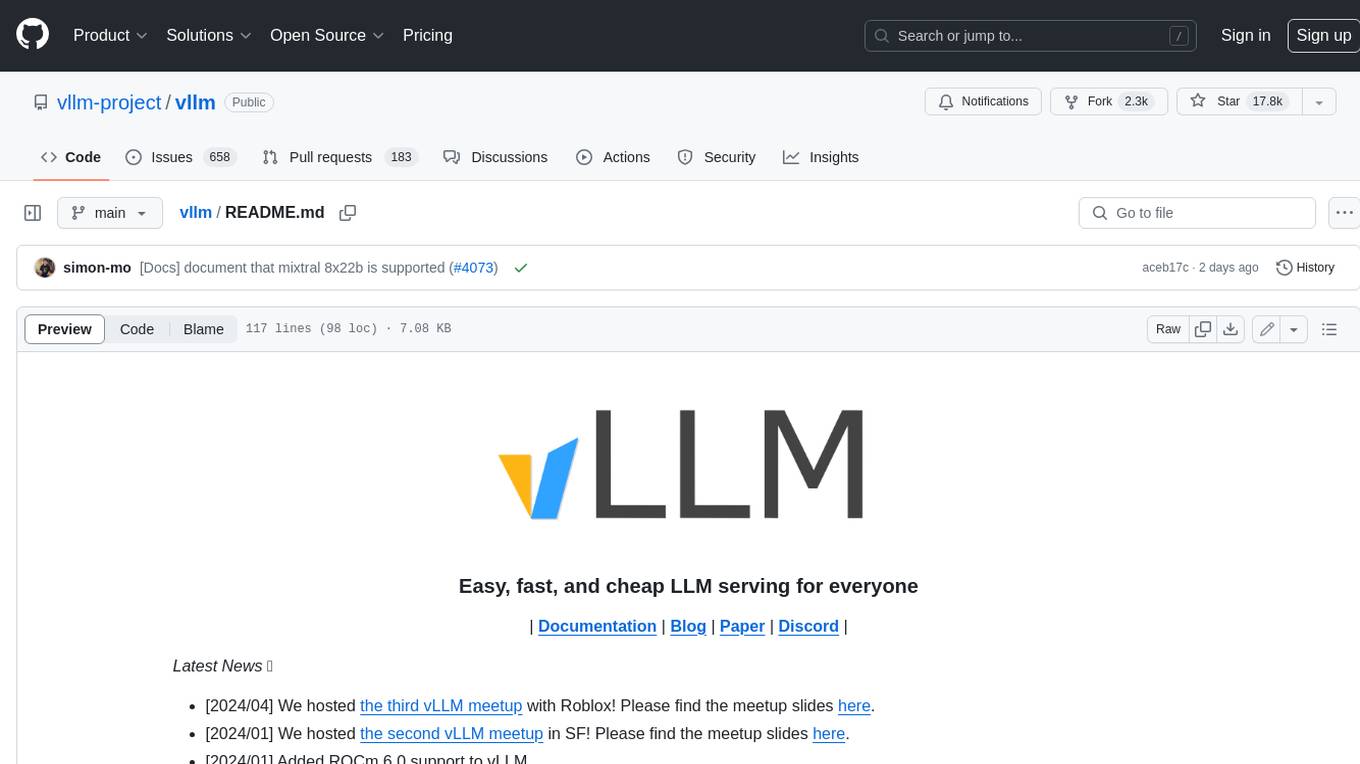
vllm
vLLM is a fast and easy-to-use library for LLM inference and serving. It is designed to be efficient, flexible, and easy to use. vLLM can be used to serve a variety of LLM models, including Hugging Face models. It supports a variety of decoding algorithms, including parallel sampling, beam search, and more. vLLM also supports tensor parallelism for distributed inference and streaming outputs. It is open-source and available on GitHub.
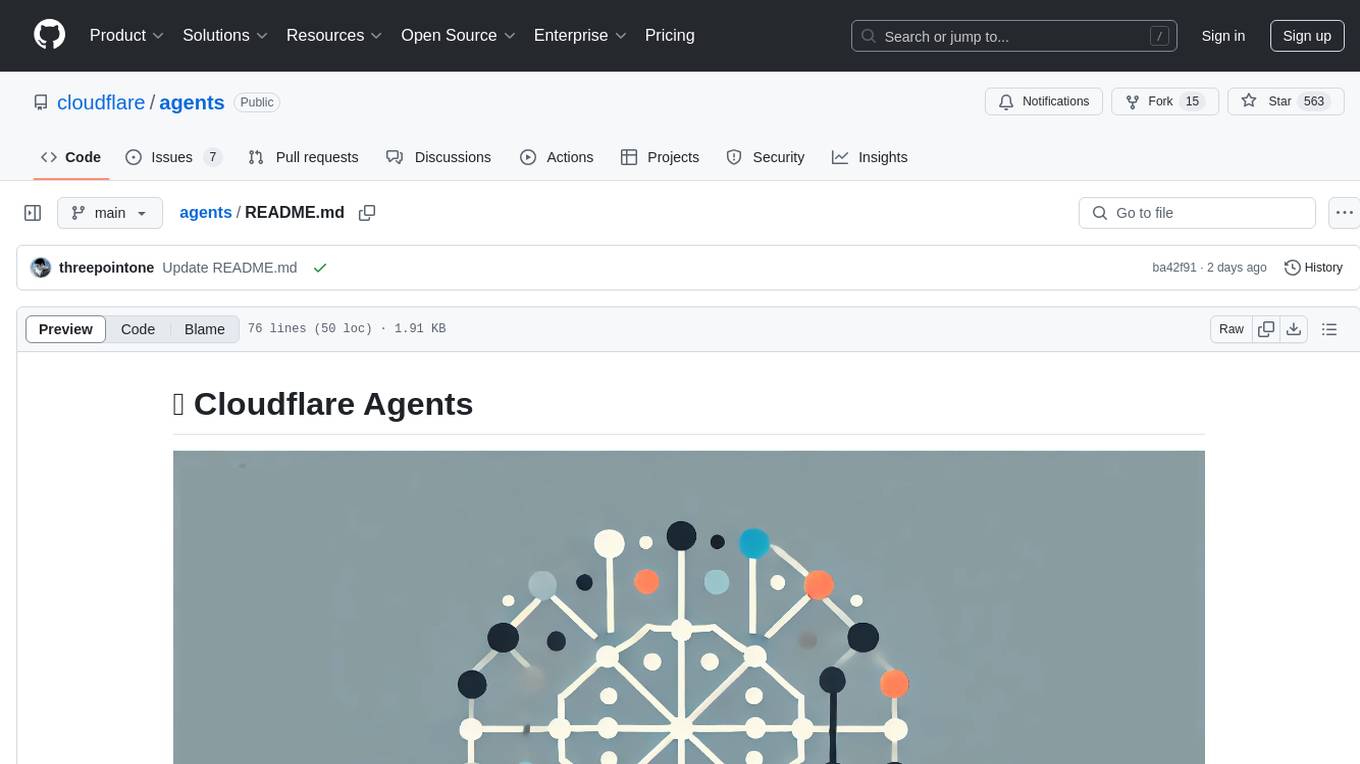
agents
Cloudflare Agents is a framework for building intelligent, stateful agents that persist, think, and evolve at the edge of the network. It allows for maintaining persistent state and memory, real-time communication, processing and learning from interactions, autonomous operation at global scale, and hibernating when idle. The project is actively evolving with focus on core agent framework, WebSocket communication, HTTP endpoints, React integration, and basic AI chat capabilities. Future developments include advanced memory systems, WebRTC for audio/video, email integration, evaluation framework, enhanced observability, and self-hosting guide.
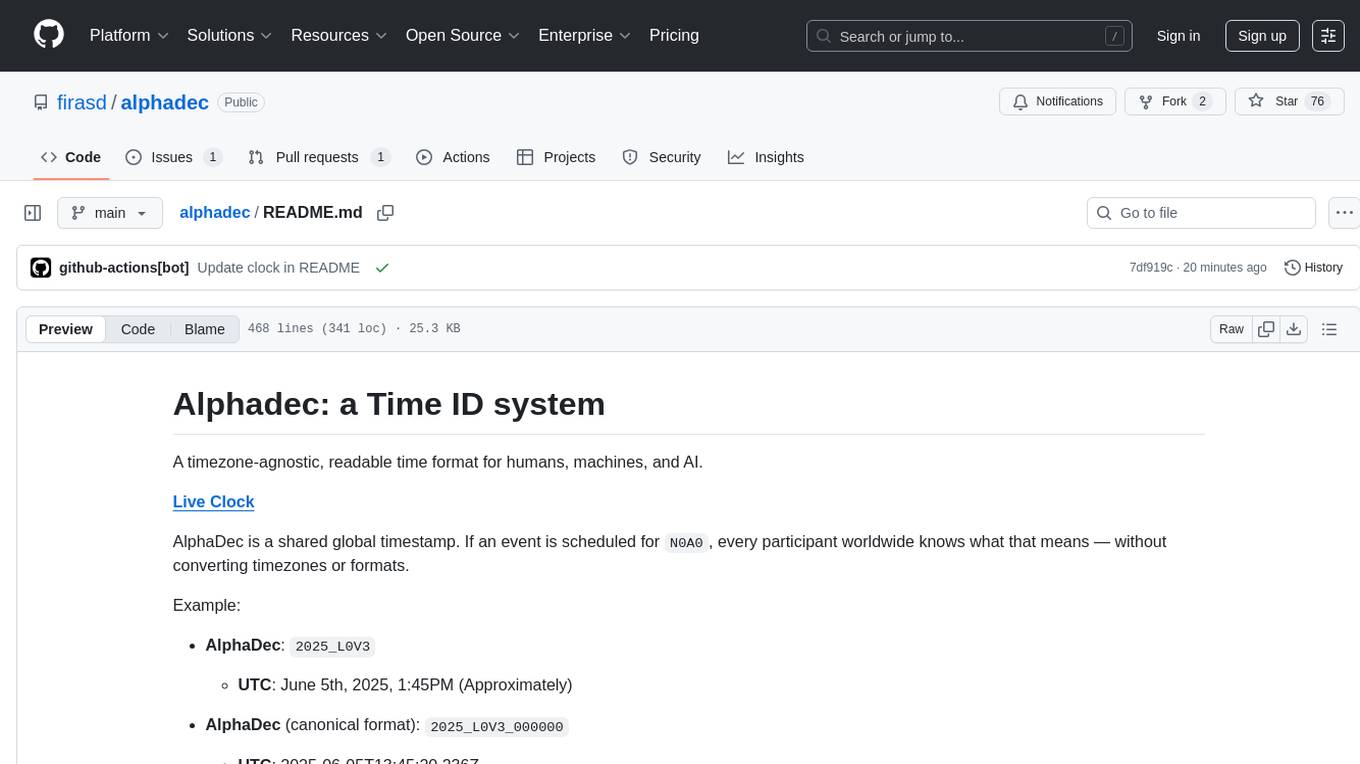
alphadec
Alphadec is a timezone-agnostic, human-readable time format designed for global timestamp synchronization. It encodes any UTC timestamp into a structured string that is lexically sortable, time-series friendly, human-readable, and compact. Alphadec serves as a powerful primitive for AI models to understand the passage of time and offers emergent properties like rhythmic timestamps, chronological ID fragments, and version labels. It is AI-friendly, database-friendly, and collision-free with ISO time formats. Alphadec's canonical format consists of parts representing the UTC year, periods, arcs, bars, beats, and milliseconds offset, allowing for efficient time-range queries and index stability.
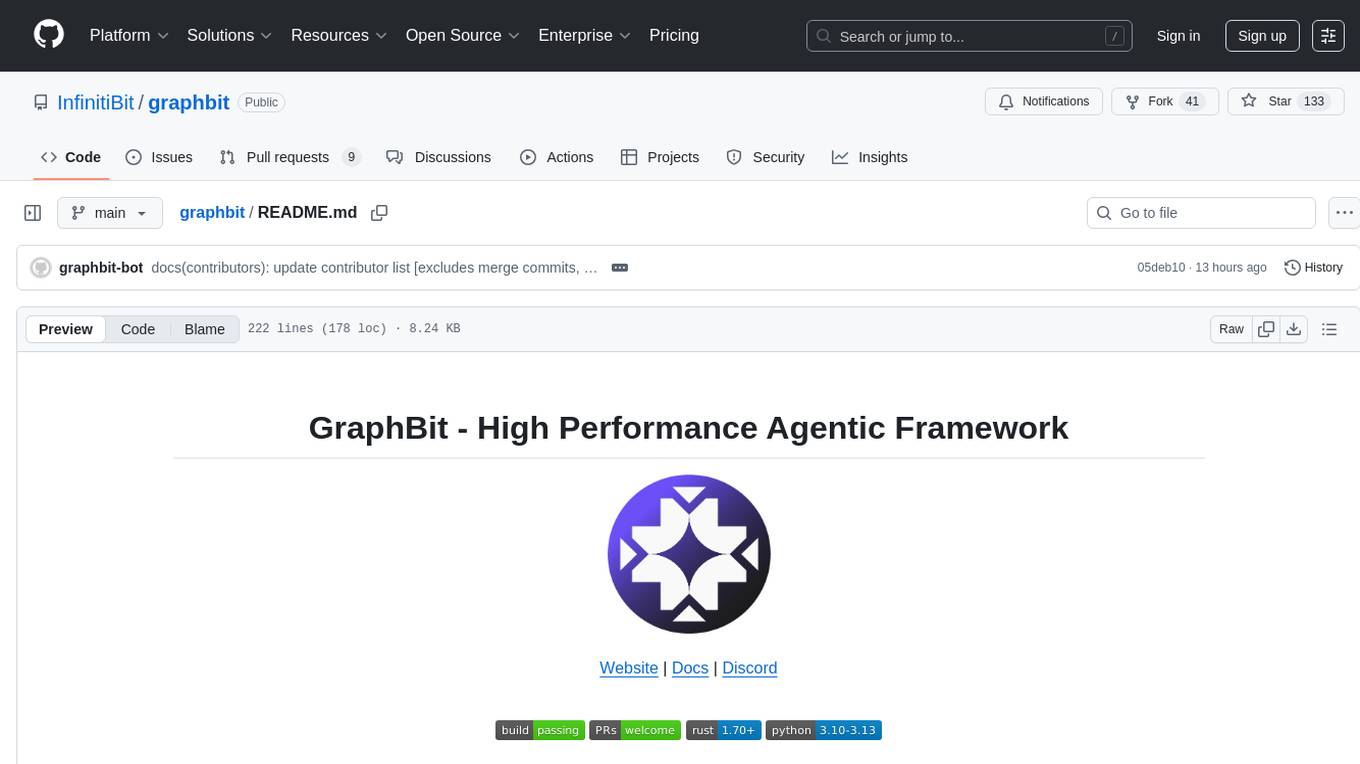
graphbit
GraphBit is an industry-grade agentic AI framework built for developers and AI teams that demand stability, scalability, and low resource usage. It is written in Rust for maximum performance and safety, delivering significantly lower CPU usage and memory footprint compared to leading alternatives. The framework is designed to run multi-agent workflows in parallel, persist memory across steps, recover from failures, and ensure 100% task success under load. With lightweight architecture, observability, and concurrency support, GraphBit is suitable for deployment in high-scale enterprise environments and low-resource edge scenarios.
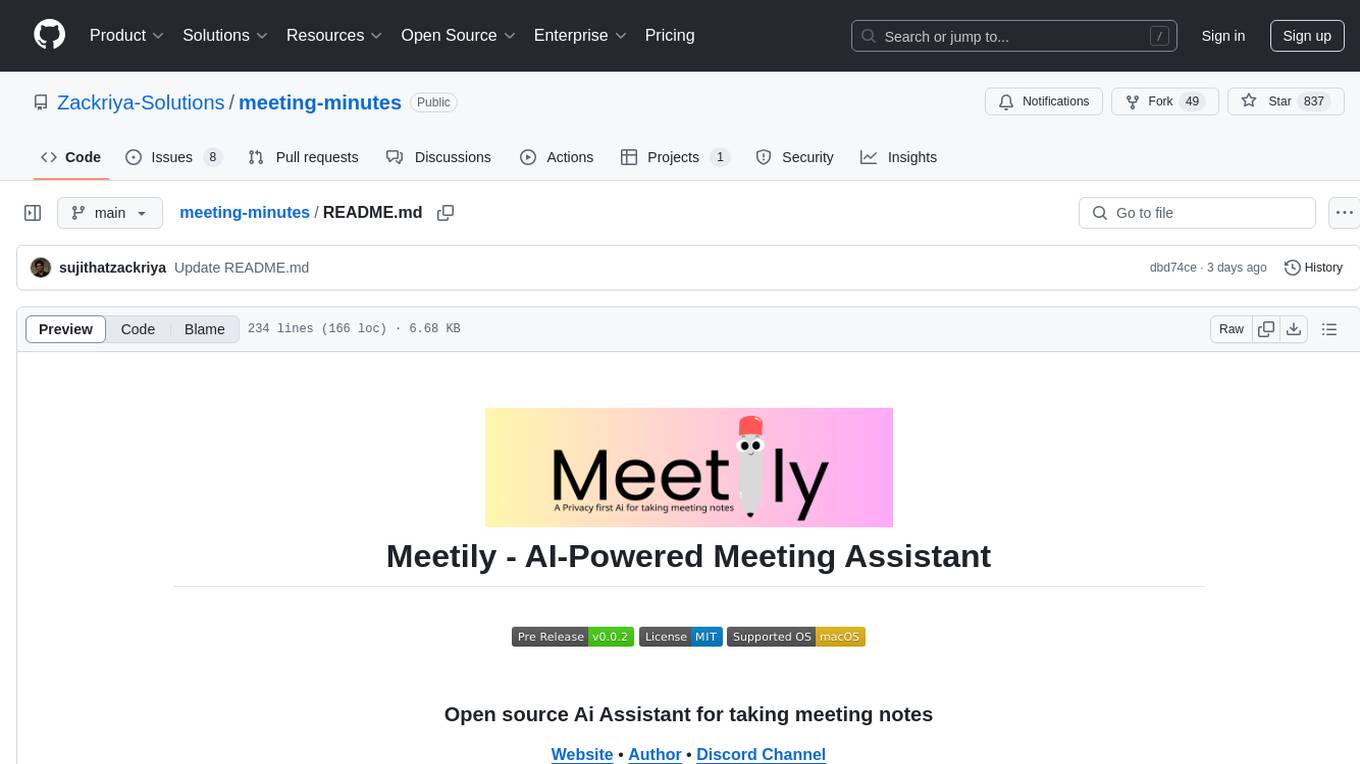
meeting-minutes
An open-source AI assistant for taking meeting notes that captures live meeting audio, transcribes it in real-time, and generates summaries while ensuring user privacy. Perfect for teams to focus on discussions while automatically capturing and organizing meeting content without external servers or complex infrastructure. Features include modern UI, real-time audio capture, speaker diarization, local processing for privacy, and more. The tool also offers a Rust-based implementation for better performance and native integration, with features like live transcription, speaker diarization, and a rich text editor for notes. Future plans include database connection for saving meeting minutes, improving summarization quality, and adding download options for meeting transcriptions and summaries. The backend supports multiple LLM providers through a unified interface, with configurations for Anthropic, Groq, and Ollama models. System architecture includes core components like audio capture service, transcription engine, LLM orchestrator, data services, and API layer. Prerequisites for setup include Node.js, Python, FFmpeg, and Rust. Development guidelines emphasize project structure, testing, documentation, type hints, and ESLint configuration. Contributions are welcome under the MIT License.
For similar tasks

langgraphjs
LangGraph.js is a library for building stateful, multi-actor applications with LLMs, offering benefits such as cycles, controllability, and persistence. It allows defining flows involving cycles, providing fine-grained control over application flow and state. Inspired by Pregel and Apache Beam, it includes features like loops, persistence, human-in-the-loop workflows, and streaming support. LangGraph integrates seamlessly with LangChain.js and LangSmith but can be used independently.
For similar jobs

weave
Weave is a toolkit for developing Generative AI applications, built by Weights & Biases. With Weave, you can log and debug language model inputs, outputs, and traces; build rigorous, apples-to-apples evaluations for language model use cases; and organize all the information generated across the LLM workflow, from experimentation to evaluations to production. Weave aims to bring rigor, best-practices, and composability to the inherently experimental process of developing Generative AI software, without introducing cognitive overhead.

LLMStack
LLMStack is a no-code platform for building generative AI agents, workflows, and chatbots. It allows users to connect their own data, internal tools, and GPT-powered models without any coding experience. LLMStack can be deployed to the cloud or on-premise and can be accessed via HTTP API or triggered from Slack or Discord.

VisionCraft
The VisionCraft API is a free API for using over 100 different AI models. From images to sound.

kaito
Kaito is an operator that automates the AI/ML inference model deployment in a Kubernetes cluster. It manages large model files using container images, avoids tuning deployment parameters to fit GPU hardware by providing preset configurations, auto-provisions GPU nodes based on model requirements, and hosts large model images in the public Microsoft Container Registry (MCR) if the license allows. Using Kaito, the workflow of onboarding large AI inference models in Kubernetes is largely simplified.

PyRIT
PyRIT is an open access automation framework designed to empower security professionals and ML engineers to red team foundation models and their applications. It automates AI Red Teaming tasks to allow operators to focus on more complicated and time-consuming tasks and can also identify security harms such as misuse (e.g., malware generation, jailbreaking), and privacy harms (e.g., identity theft). The goal is to allow researchers to have a baseline of how well their model and entire inference pipeline is doing against different harm categories and to be able to compare that baseline to future iterations of their model. This allows them to have empirical data on how well their model is doing today, and detect any degradation of performance based on future improvements.

tabby
Tabby is a self-hosted AI coding assistant, offering an open-source and on-premises alternative to GitHub Copilot. It boasts several key features: * Self-contained, with no need for a DBMS or cloud service. * OpenAPI interface, easy to integrate with existing infrastructure (e.g Cloud IDE). * Supports consumer-grade GPUs.

spear
SPEAR (Simulator for Photorealistic Embodied AI Research) is a powerful tool for training embodied agents. It features 300 unique virtual indoor environments with 2,566 unique rooms and 17,234 unique objects that can be manipulated individually. Each environment is designed by a professional artist and features detailed geometry, photorealistic materials, and a unique floor plan and object layout. SPEAR is implemented as Unreal Engine assets and provides an OpenAI Gym interface for interacting with the environments via Python.

Magick
Magick is a groundbreaking visual AIDE (Artificial Intelligence Development Environment) for no-code data pipelines and multimodal agents. Magick can connect to other services and comes with nodes and templates well-suited for intelligent agents, chatbots, complex reasoning systems and realistic characters.



